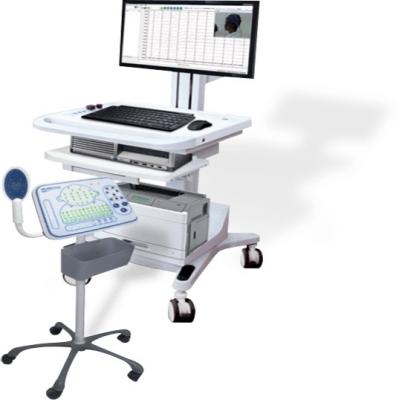
Introduction
The human brain, with its intricate network of neurons, constantly generates electrical activity. This activity, often referred to as brainwaves, plays a crucial role in understanding various cognitive processes, emotions, and neurological disorders. Electroencephalography (EEG) is a technology that allows scientists and medical professionals to measure and analyze these brainwaves. In this article, we will delve into the fundamentals of EEG technology, exploring how it works, its applications, and the insights it provides into the complex workings of the human brain.
What is EEG?
Eeg system is a non-invasive neuroimaging technique that records the electrical activity of the brain over time. The recorded signals, known as electroencephalograms, provide valuable information about brain function and can be used to study various neurological conditions, monitor brain activity during different tasks, and even control devices through brain-computer interfaces.
The Basics of Brainwaves
The brain produces different types of electrical activity, known as brainwaves, which are classified based on their frequency. The main types of brainwaves include:
- Delta Waves (0.5-4 Hz): Associated with deep sleep and certain pathological states.
- Theta Waves (4-8 Hz): Occur during light sleep, relaxation, and meditation.
- Alpha Waves (8-13 Hz): Present when the brain is in a relaxed and idle state, such as during closed eyes and a calm, wakeful state.
- Beta Waves (13-30 Hz): Associated with active, analytical thought, and concentration.
- Gamma Waves (30-40 Hz and above): Linked to higher cognitive processes, perception, and consciousness.
How EEG Works
EEG technology involves placing electrodes on the scalp to detect and record the electrical activity generated by the brain. The electrodes are typically arranged in a specific configuration, often following the international 10-20 system, which allows for consistent electrode placement across individuals.
When neurons in the brain communicate, they generate electrical impulses. These electrical signals can be measured by the electrodes on the scalp. The resulting EEG signals are then amplified and processed to create a visual representation of the brainwave patterns.
Applications of EEG
Clinical Diagnostics
EEG is widely used in clinical settings to diagnose and monitor various neurological conditions, including epilepsy, sleep disorders, and certain types of brain injuries. Abnormal patterns in brainwaves can indicate underlying neurological issues.
Cognitive Neuroscience
Researchers use EEG to study cognitive processes such as attention, memory, and decision-making. By analyzing brainwave patterns associated with specific tasks, scientists gain insights into how the brain functions during different cognitive activities.
Brain-Computer Interfaces
EEG plays a crucial role in the development of brain-computer interfaces (BCIs). BCIs enable individuals to control external devices using their brainwaves. This technology holds promise for enhancing the quality of life for individuals with motor disabilities.
Neurofeedback and Meditation
Some individuals use EEG for neurofeedback training, a process in which individuals learn to control their brainwave patterns consciously. This has applications in managing stress, anxiety, and improving overall well-being. EEG is also used in meditation research to understand the brainwave patterns associated with meditative states.
Challenges and Advances
While EEG provides valuable insights into brain function, it has some limitations. The main challenge lies in the limited spatial resolution of EEG, as it measures activity from the surface of the scalp rather than specific regions within the brain. Advanced techniques, such as high-density EEG and source localization methods, aim to address this limitation by providing more detailed information about the brain's internal activity.
In recent years, there have been significant advances in EEG technology, including the development of wearable EEG devices and improved signal processing algorithms. These advancements make EEG more accessible and user-friendly, paving the way for a broader range of applications and research studies.
Conclusion
Home eeg device technology has proven to be a powerful tool in understanding the intricate workings of the human brain. From clinical diagnostics to cognitive neuroscience and brain-computer interfaces, EEG provides a window into the electrical activity that underlies our thoughts, emotions, and behaviors. As technology continues to advance, the future holds exciting possibilities for expanding the capabilities of EEG and unlocking even deeper insights into the complexities of the human mind.






























